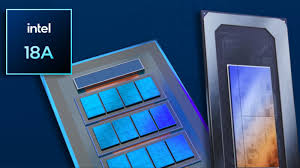Microsoft is reportedly preparing to leverage Intel’s advanced 18A semiconductor process for its upcoming generation of artificial intelligence (AI) chips, potentially deepening collaboration between the two U.S. tech giants. The move could serve as a major endorsement of Intel’s next-generation manufacturing technology as it seeks to regain leadership in the global chipmaking arena.
Maia 2 AI Accelerators and Azure
Sources indicate that Microsoft may deploy the 18A node for its upcoming “Maia 2” AI accelerators, which are designed to handle cloud-based AI workloads within Microsoft’s Azure data centers. If finalized, this partnership would make Microsoft one of Intel Foundry’s largest external clients for its cutting-edge 18A process.
Intel’s 18A Process Technology
Intel’s 18A process, part of its “five nodes in four years” roadmap, introduces innovations such as RibbonFET transistors and PowerVia backside power delivery. These advancements promise significant improvements in performance and energy efficiency, critical for high-compute applications like AI model training and inferencing.
Strategic Benefits for Microsoft
Adopting Intel’s 18A process aligns with Microsoft’s strategy to diversify chip sourcing while expanding custom silicon capabilities. The company has been developing proprietary AI accelerators to compete with rivals like Amazon Web Services and Google Cloud, which already produce specialized processors optimized for AI workloads.
Boosting Intel Foundry’s Credibility
The potential collaboration signals confidence in Intel Foundry, the company’s rebranded manufacturing division aiming to rival TSMC and Samsung. A commercial partnership with Microsoft would validate Intel’s technology and production capabilities, demonstrating competitiveness in the contract chipmaking market.
Implications for the AI Chip Race
If confirmed, Microsoft’s adoption of the 18A node could optimize performance for its rapidly growing AI infrastructure, including Copilot, OpenAI integrations, and Azure AI services. The collaboration also underscores how the global race for AI computing power is forging new alliances and shaping the next generation of semiconductor innovation.

